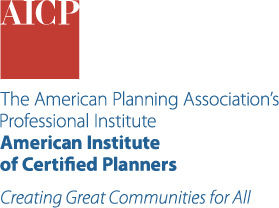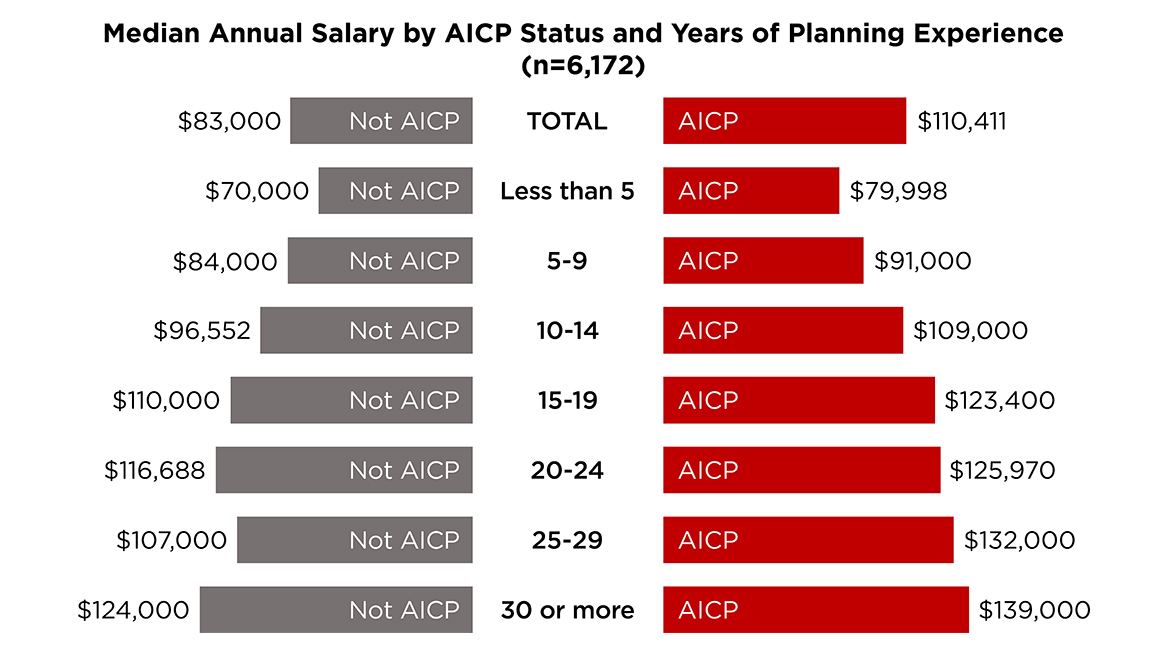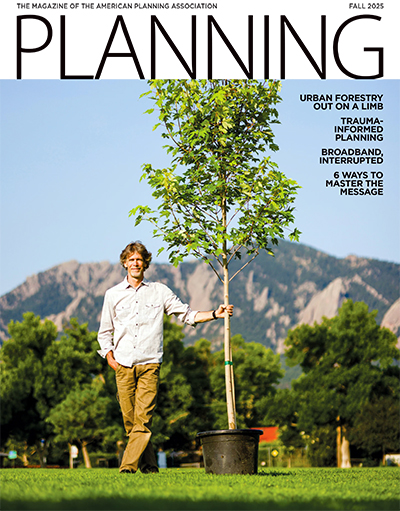Sept. 29, 2025
It pays to be certified, and we have the receipts.
In the American Planning Association's (APA) most recent salary survey, which analyzed responses from nearly 6,400 self-identified planners, American Institute of Certified Planners (AICP) respondents report earning about 31 percent more, on average, than respondents without the certification.
"We know that AICP is more than just some letters after your name — it's a community of professionals who support each other and follow a code of ethics that helps make sense of the work we do," says Erin N. Perdu, AICP, president of the professional institute. "It shows our employers or prospective clients that we have achieved a certain level of knowledge and skills, and the continuing education helps us stay ready for new or changing trends in the profession. I'm very happy to see that the value of the AICP credential is being recognized amongst employers in this way."
The survey data suggests that pursuing certification may be a strategy for planners to help safeguard their careers and compensation during unpredictable or challenging policy environments.
The results are in, and survey says ...
For more than 75 years, APA has periodically asked planners about their salaries, compensation packages, employment status, and educational and professional experiences. This provides a snapshot of the state of the profession while also monitoring trends and patterns across the public, private, and nonprofit planning sectors.
The 2025 Planners' Salary and Benefits Survey, published in late September, analyzed responses from U.S. planners who identify as currently employed or self-employed. Seventy percent of the respondents say they work for public entities, while 26 percent say they work for private for-profit entities. The median age of respondents is 40.
COMPENSATION: The median annual salary for respondents working full-time is $98,000, or an hourly rate of about $47.12. Those who work in a metropolitan statistical area (MSA) report earning 15 percent more than those working outside of MSAs.
Meanwhile, respondents employed in the private sector say their earnings are 12 percent higher, on average, than those working in the public sector. But public-sector planners say they have more comprehensive benefits packages.
While planners may have no direct ability to affect federal funding levels or trade or immigration policy, we can be better prepared to respond to external shocks. For some of us, this will mean getting more familiar with not only the revenue sources that we've traditionally used to pay for planning but also with alternative funding strategies that may help the profession adapt.— Excerpt from "The Planner's Paycheck: Where We Go from Here"
FUNDING: Those who completed the survey were asked to identify what makes up their paycheck. Of the public sector respondents, half say their positions are funded in part or wholly by property taxes; 34 percent say funding comes from fees for services rendered like development review fees; 26 percent from sales taxes; and 18 percent from government transfers or formula grants. Meanwhile, 78 percent of respondents from private for-profit companies say fees for services rendered pay for their salaries.
This suggests that federal funding delays — or outright cuts — or a lagging economy may disrupt the work planners are doing in their local communities.
TENURE: Half say they have been in their current position for two years or less. Less than 10 percent of total respondents say they have been in their current position for a decade or longer. Comparatively, U.S. Bureau of Labor Statistics data shows that the median tenure of the workforce in 2024 was 3.9 years.
Read the full report
The full 2025 survey results are available to all APA members as part of their membership, including a high-level summary of the data and how to help interpret the findings. Nonmembers and employers also can purchase access to the survey results.
Learn more at planning.org/salary/2025/.





